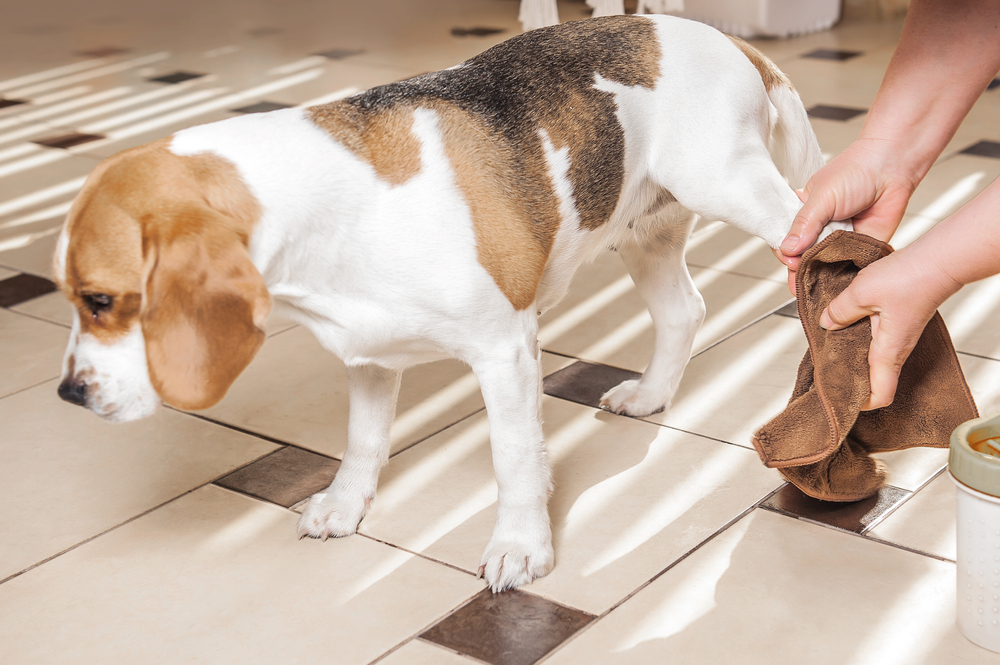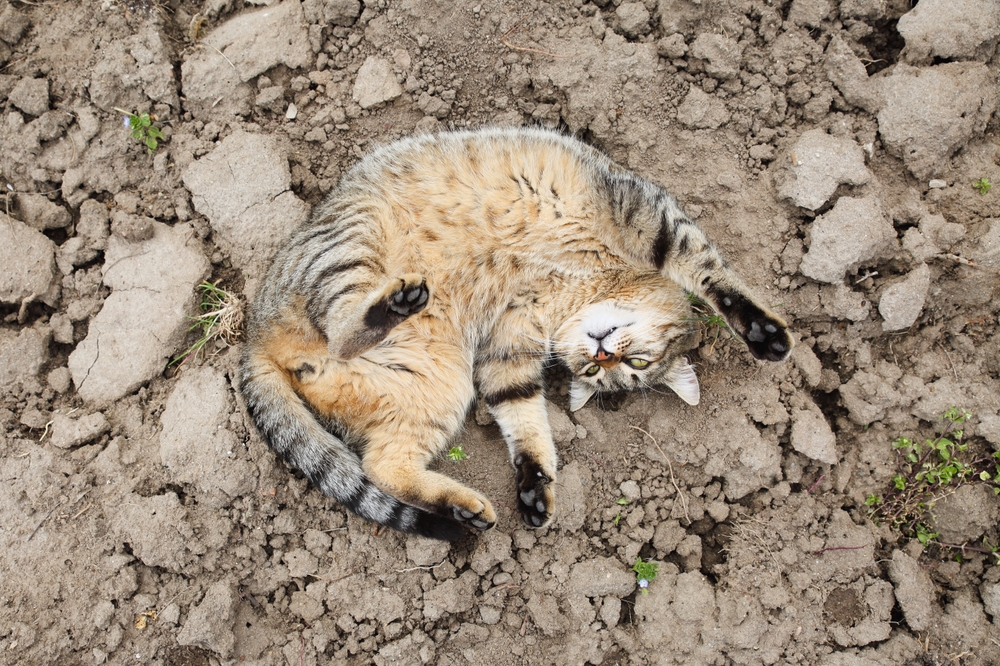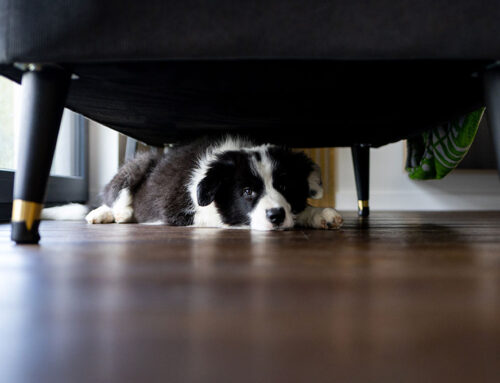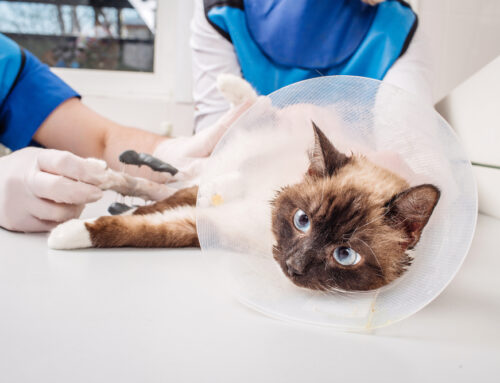Rolling, digging, and snuffling in the dirt are natural canine behaviors, and, if your cat ventures outdoors, they also likely dig in the soil. While exploring the outdoor environment is normal for pets, doing so puts them at risk of coming in contact with several hazards hidden within the soil. From parasites and fungal spores to bacteria and viruses, the ground can be a breeding ground for various health threats. Our Greenfield Veterinary Clinic team highlights the myriad dangers lurking in dirt and provides tips on how to protect your four-legged friend.
Parasites in the soil are dangerous to pets
Various intestinal parasites prove exceptionally hardy, capable of surviving in the environment for months or years. Common parasites your furry pal may encounter in the soil include:
- Roundworms — Infected pets’ and wildlife’s feces commonly contaminate the soil with roundworm eggs. Pets can ingest these eggs while grooming themselves after playing in the dirt. Once ingested, the eggs hatch into larvae that migrate through the body, potentially causing serious health issues.
- Hookworms — Hookworm larvae can penetrate the skin, especially through the paws, when pets walk on contaminated soil. These parasites attach to the intestinal lining, causing blood loss.
- Toxoplasma gondii — Infected cats’ feces can contaminate the soil with this protozoan parasite. Toxoplasmosis can infect virtually any warm-blooded animal, including cats, dogs, and people. Cats who develop toxoplasmosis generally show no signs, but infected dogs may show neurologic signs, fever, and muscle pain.
Your pet can contract an intestinal parasite infection after exploring contaminated dirt. If your dog or cat develops an infection, they may exhibit any of the following signs:
- Diarrhea
- Vomiting
- Lethargy
- Weight loss
- Anemia
- Pot-bellied appearance
Fungal spores in the soil are dangerous to pets
When pets dig in the dirt or roll in vegetative litter, they can cause fungal spores to be released into the air. Once inhaled, fungal spores can cause serious illness in infected pets. The most common fungal infections that pets can develop include:
- Blastomycosis — Blastomyces dermatitidis is found in moist soil, particularly near water. Pets can inhale spores and develop blastomycosis, suffering from respiratory issues, coughing, limping, fever, weight loss, and skin lesions.
- Histoplasmosis — Histoplasma capsulatum is commonly found in soil enriched with bird or bat droppings. This fungus causes histoplasmosis when its spores are inhaled, leading to coughing, labored breathing, fever, lethargy, weight loss, skin lesions, joint problems, and gastrointestinal (GI) issues.
Bacterial threats in the soil are dangerous to pets
Myriad bacterial species lurk within the soil, capable of transmitting dangerous infections to pets. If your pet ingests contaminated soil, they can contract bacterial infections including:
- Leptospira spp. — Leptospira bacteria thrive in wet soil and water and can infect pets through cuts in the skin or mucous membranes. This bacteria can cause leptospirosis, a severe disease that affects the kidneys and liver and may cause fever, vomiting, abdominal pain, diarrhea, anorexia, excessive thirst and urination, severe weakness and lethargy, and jaundice.
- Salmonella — Soil can be contaminated with salmonella bacteria from an infected animal’s feces. Pets can contract salmonellosis if they ingest contaminated soil and develop vomiting, diarrhea, fever, lethargy, and dehydration.
Viral hazards in the soil are dangerous to pets
In addition to bacterial pathogens, various viruses can also hide within the soil and lead to potentially life-threatening infections. Dirt contaminated with viruses can cause pets to develop the following:
- Canine parvovirus — Parvovirus is a highly contagious virus that can survive in soil for months or years. This virus primarily affects puppies and unvaccinated dogs, causing severe bloody diarrhea, vomiting, fever, lethargy, and dehydration.
- Feline panleukopenia virus — Similar to canine parvovirus, feline panleukopenia can persist in the environment for extended periods and is notorious for spreading through litters of young kittens. Affected cats can develop fever, vomiting, diarrhea, severe dehydration, and, in some cases, sudden death.
Soil safety tips for pet owners

Dogs and cats like to play in the dirt. Learn to keep your pet safe by taking the following preventive measures:
- Regular veterinary care — Keep your pet up-to-date on vaccinations and deworming treatments.
- Environmental maintenance — Keep your yard clean and dispose of pet feces promptly to reduce the soil contamination risk.
- Personal hygiene — Wash your hands thoroughly after handling soil or cleaning up after your pet to prevent zoonotic diseases’ spread.
- Protective gear — Consider outfitting your dog with protective booties when walking in potentially contaminated areas.
- Safe play areas — Create a designated, clean play area for your pet to minimize their exposure to contaminated soil.
While playing in the dirt can be great fun for pets, understand that soil can harbor potential dangers that can impact your furry pal’s health. Protect your four-legged friend from soil-borne hazards by scheduling an appointment with our Greenfield Veterinary Clinic team for vaccinations and deworming medications.







Leave A Comment